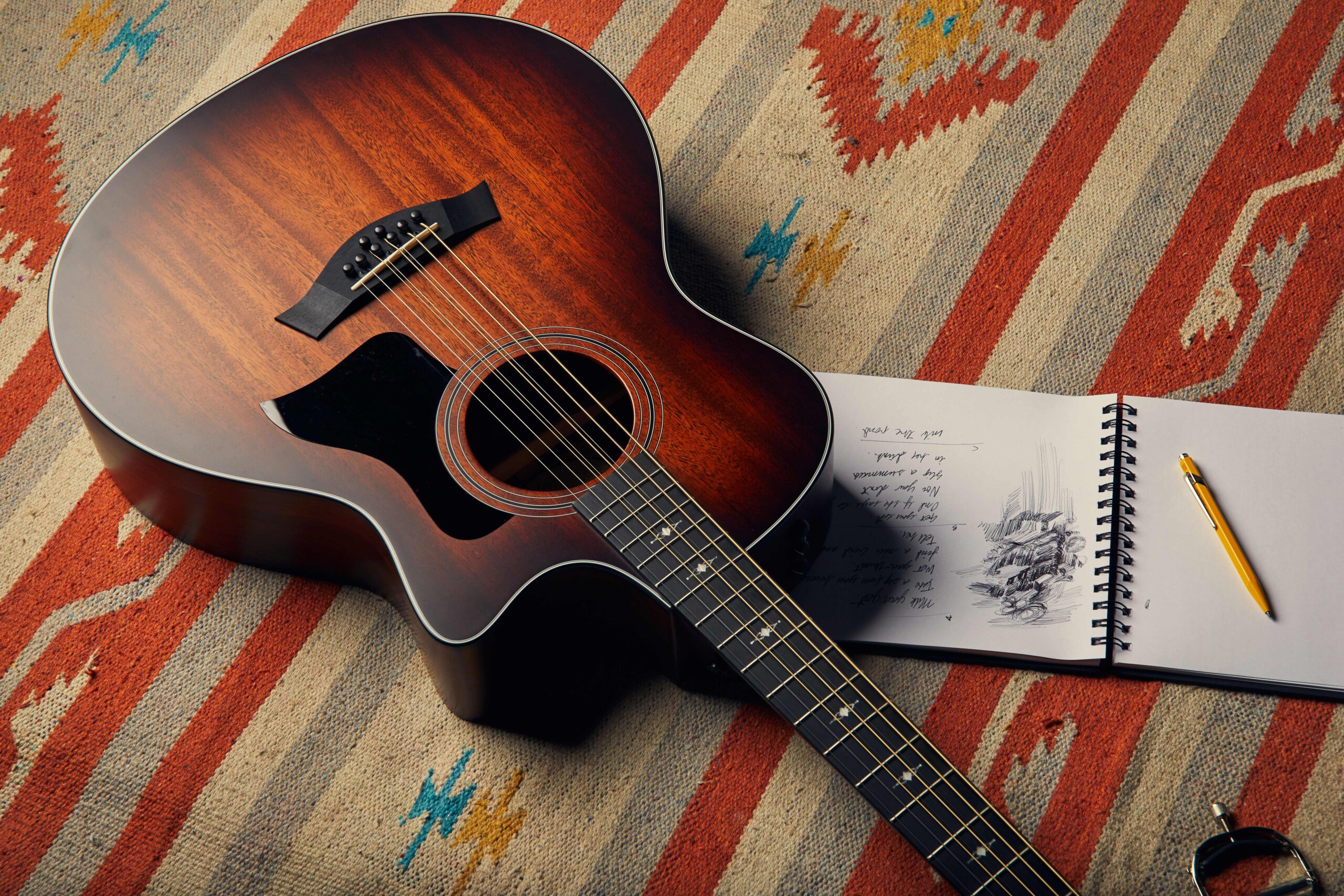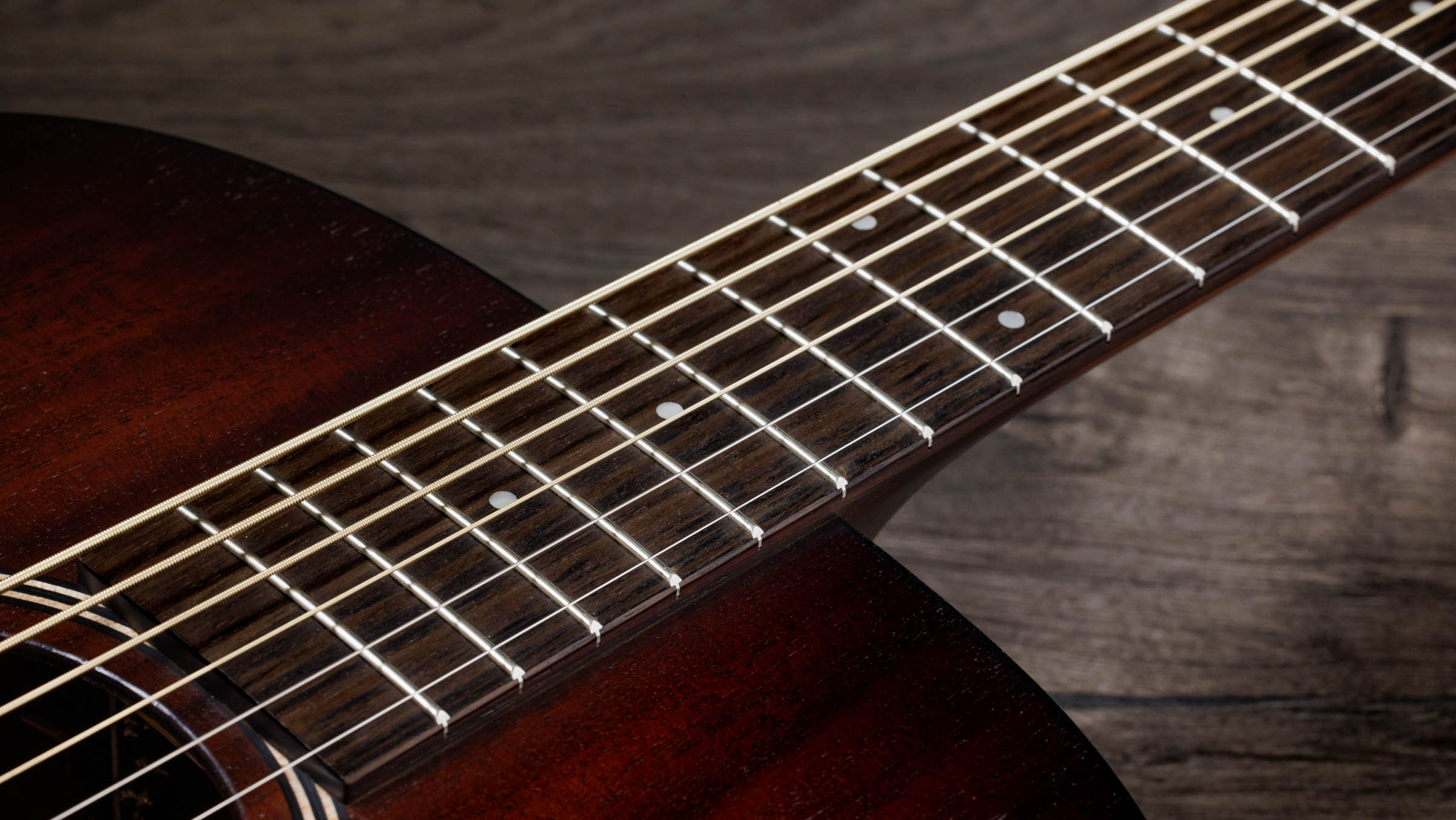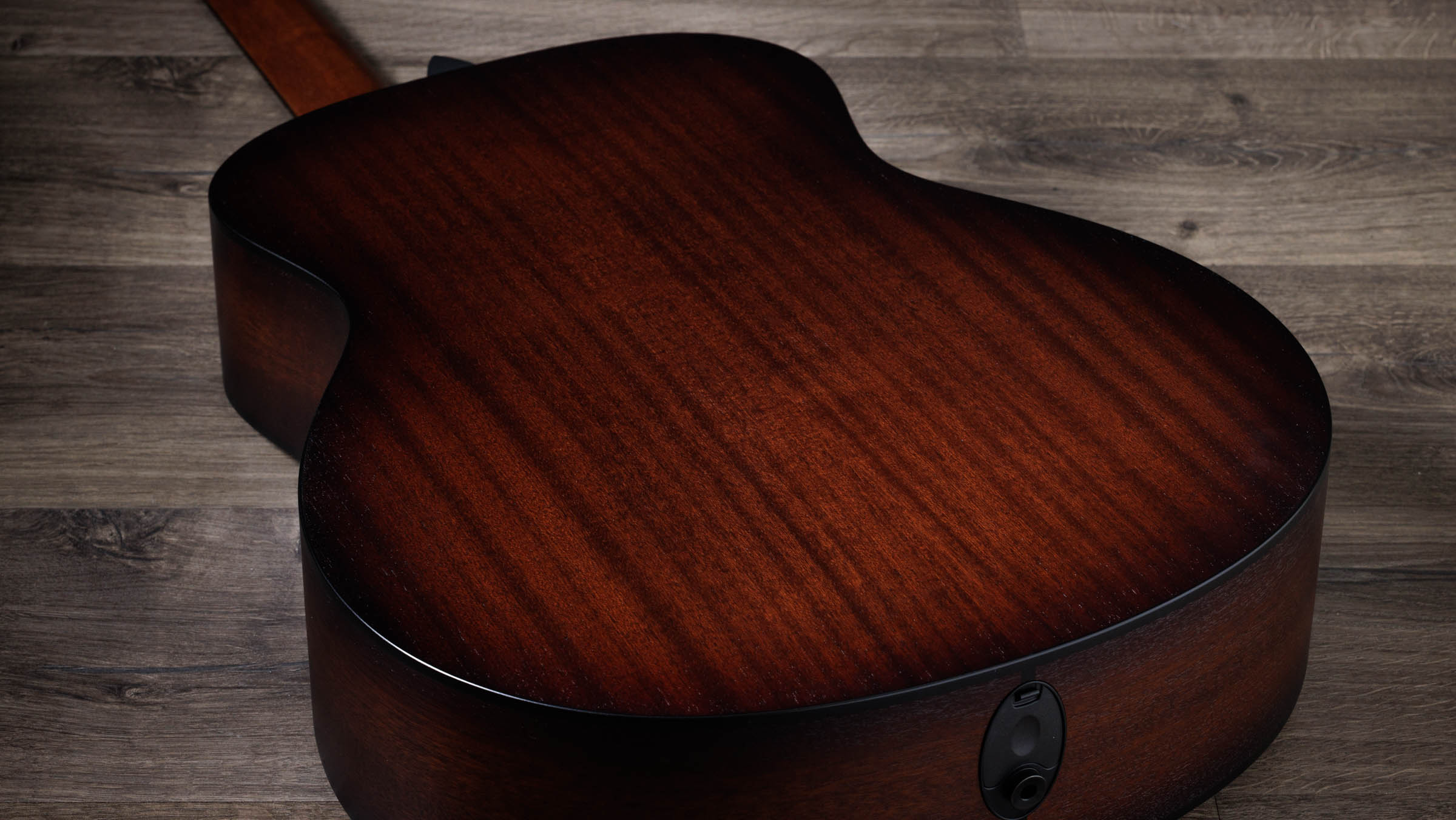Ed. Note: This article originally ran in our summer 2016 edition. Since we recently released batches of special-edition 6-string and 8-string baritone guitars, we thought we’d republish it for readers who may have missed it the first time.
When I saw a Taylor 8-string baritone guitar for the first time, I thought, it’s so weird … and so perfect for me. I saw this magnificent instrument as something new and very specialized, without hope for a wider playing audience. Once I got one home, I realized that it was also born from the luthier’s tradition of small evolutionary steps. As a result, this logical design makes the 8-string baritone — and the slightly less eccentric 6-string baritone — not only a unique instrument, but one that any guitarist can be comfortable with almost immediately.
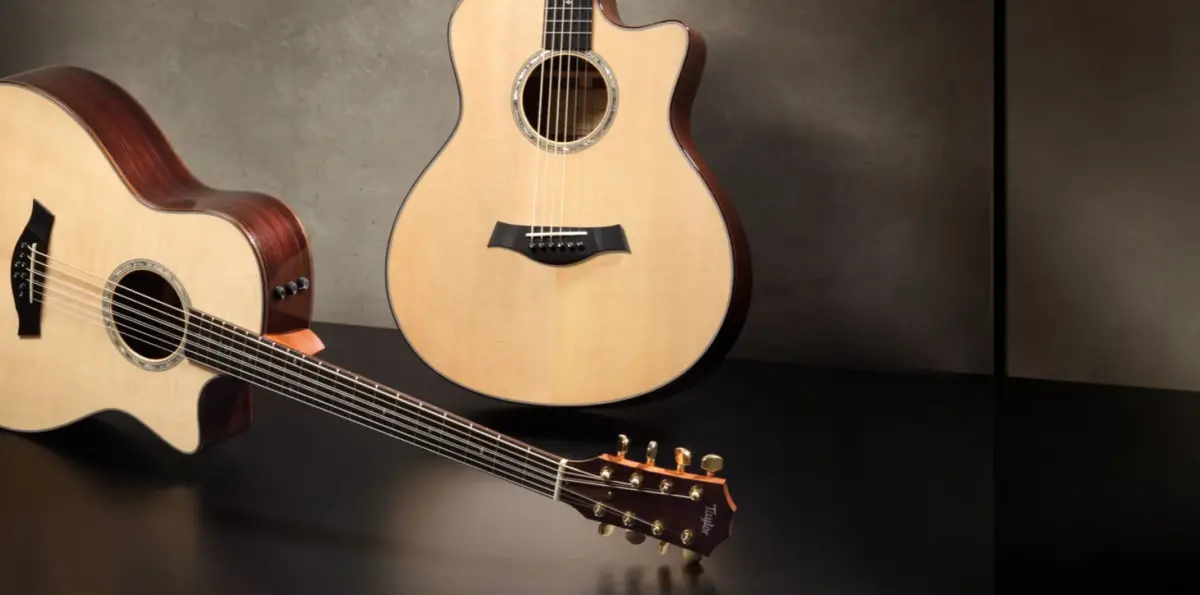
Tuning
When I had a chance to ask Bob Taylor who he thought that guitar was made for, I was delighted that his answer doubled my appreciation for the instrument. “It’s for old guys who can’t hit the high notes in ‘Have You Ever Seen The Rain’ anymore,” he quipped. And there you have it: a simple way to play your favorite song but still sing melodies that are otherwise out of your range. No more transposing or retuning; just pick up that baritone, strum a C chord shape, and out comes a glorious G. And that high A note — found in far too many John Fogerty songs, not to mention Journey, The Who, Eagles, et al. — becomes a much more comfortable E. (If this pitch and singing jargon is new to you, check out my “Hit Your Mark” singing lesson in the Spring 2013 issue of Wood&Steel.)
I realize that Bob was only being half-serious in his comment — if anyone knows that there are innumerable uses for the baritone it’s Mr. Taylor himself — but there is also a lot of truth in his jest. Guitar-playing singer-songwriters tend to favor “guitar-friendly” keys (G, A, E and C, for example), which means many of them end up singing a lot of “high” notes that the average guitar hobbyist just can’t hit without some professional vocal training. What the baritone allows the average player/singer to do is to play songs, strumming the original chord shapes, but the chords that are heard are a fourth lower, thus giving the recreational player a better chance of staying in key vocally.
A normal guitar only allows you to go up in pitch with a capo. The baritone, by being tuned a fourth lower, actually allows you go up and down in pitch.
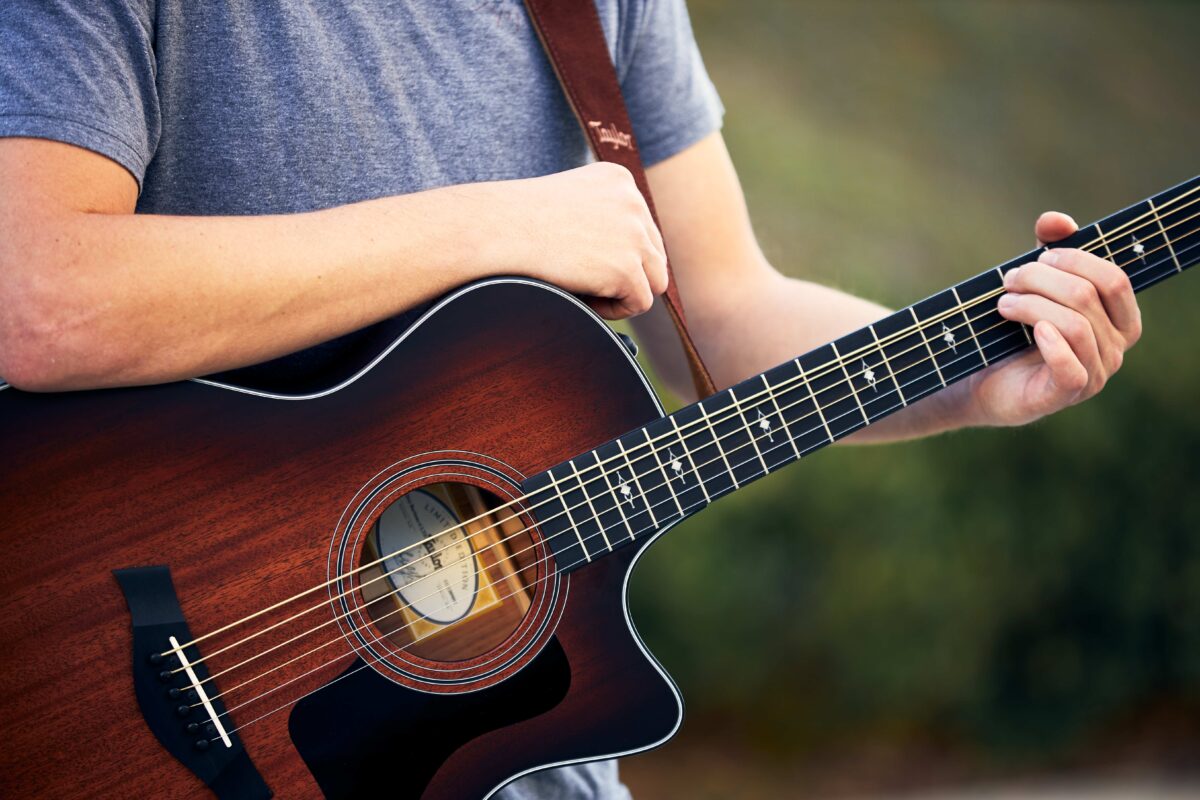
“This is all great,” I hear you saying, “but what if I don’t need to go a fourth lower? Maybe I just need a whole step lower. Or I don’t need it lower at all, I just like the sound of the 8-string.” Well, the answer to these questions is so simple that some people call the solution a “cheater.” Yes, I’m talking about a capo. (I’ve found that the Kyser 12-string capo works best.)
Unlike a normal guitar, which only allows you to go up in pitch with a capo, the baritone, by being tuned a fourth lower, actually allows you go up and down in pitch. All you have to do to get a baritone into standard tuning is to put that capo at the 5th fret. Play a G chord; a G chord is what you hear. But if you want to jam out with a Van Halen song in Eb, don’t retune; just drop the capo one fret, strum E, and out comes Eb. Or say you want to play along with the original version of “Yesterday” by The Beatles. Drop that capo two frets — “Yesterday” sounds in F, but McCartney played it out of G, tuned down a whole step. Is Hendrix’s “Hear My Train a Comin’” more your speed? Capo the baritone at the first fret and I wish you luck (Hendrix was tuned down two whole steps!). As you can see, the versatility of the low tuning alone is enough to encourage one’s interest in the baritone. But wait, there’s more….
Texture, Tone and Faux Bass
One of the other many virtues of the baritone’s lower tuning is the sonic manifestation of chords and single-notes that place the baritone’s sound in between a standard guitar and a bass…or as I like to think of it, a cello. The 8-string has the additional benefit of the jangle of the two middle octave strings, which fills out the sound even more, particularly when strumming.
The practical applications of these unique characteristics include: 1) textural variation when playing with other guitarists, due to the thicker strings and unison strings (just strumming G, C and D in unison with a standard guitar is an auditory thrill); 2) chord voicing variations that allow the baritone to be played in different frequency registers, using different chord shapes; and 3) the ability to play faux basslines. These last two functions could stand a bit more explanation, so let’s put them into song context.
Example 1 is the A section melody for the old-time/bluegrass staple “Angeline The Baker,” notated for standard tuning guitar, in the key of D, using open position “cowboy” chords. Nothing unusual here.
Example 2 is the exact same melody but here transcribed for baritone. If you don’t have a baritone handy, don’t let this confuse you: Yes, the key has changed on paper, but when you play the baritone in the key of G, it will actually sound in the key of D. As you’ve no doubt noticed, not only has the melody changed positions, but the chords also are different. Once again, because of the baritone’s down-a-fourth tuning, the G chord will actually sound as a D chord. This is an example of using the baritone for chord voicing and frequency register variations.
Example 3 introduces a bassline for standard guitar. Now if you are playing this on a normal guitar, you’ll hear that Example 3 does work, but it’s pretty thin for a bassline.
On the other hand, Example 4, transcribed for baritone, is fat, rich and full, like a bassline should be.
A New Instrument?
In the early 1700s Bartolomeo Cristofori invented what we now call the piano, which was a radical variation of the harpsichord (and then some). Though the outward physical appearance of both harpsichord and piano are similar, no one would ever confuse the sound of the two instruments. Additionally, the two instruments could be played the same way, but the greater expressive control and tonal flexibility the piano offered required composers to rethink their approach to keyboard music and helped create a new body of musical works that changed music forever.
This is how I see and hear the 8-string baritone.
I’ve already made my case for the 6- and 8-string baritone as a fine addition to any player’s collection, but now allow me to get a little more personal and suggest that the limits of the 8-string baritone are only those of our own imaginations.
Personally, I have been doing my best to slowly but surely compose a body of music specifically designed for the 8-string baritone. These pieces emphasize the individual texture, tone and timbre of the instrument; highlight the massive, resonant overtones the guitar produces; and exploit the extreme register differences found between unwound, doubled, and wound bass strings. For all intents and purposes, these pieces can only be properly performed on an 8-string baritone, a guitar that can produce music no other instrument can. And I’m writing the music because it wants to be written. Ultimately this is why the 8-string baritone is perfect for me: It inspires. It induces. And it responds!
